One of the most memorable times of my life was the week I spent in Hawaii for my brother’s wedding. The resort on the beach, the sunshine, the warm weather, the mai tais and Lava Flows, morning swims in the ocean, sitting next to a waterfall, watching the sunset as a grass-skirted man danced and sliced coconuts with a giant machete — it was all so serene and charming.
But perhaps what completed the tropical experience most was the abundance of shimmering koi ponds almost everywhere I stepped. Glimmering white, orange and black fish the size of party subs were right at my fingertips. To that effect, for me anyway, I find that the most peaceful, tranquil, relaxing and inspiring home landscapes are those that incorporate a fish pond.
So I wondered: What does it take to put a fish pond in a backyard? Harold Leidner was able to offer guidance. The Dallas landscape designer has built dozens of fish ponds in every shape and size, all the way up to a lavish $40,000 koi pond the size of a swimming pool.
The takeaway is, like indoor aquariums, fish ponds are not for the faint of heart. They take a lot of time and effort, love and care. They can be time consuming, budget draining and, at times, heartbreaking (losing any pet is tough). But as with most difficult things in life, the payoff is worth it. And if you’ve got the time — even just one free weekend — Leidner says you can build your own backyard fish pond for about $2,500.
Here’s what you'll need to consider.
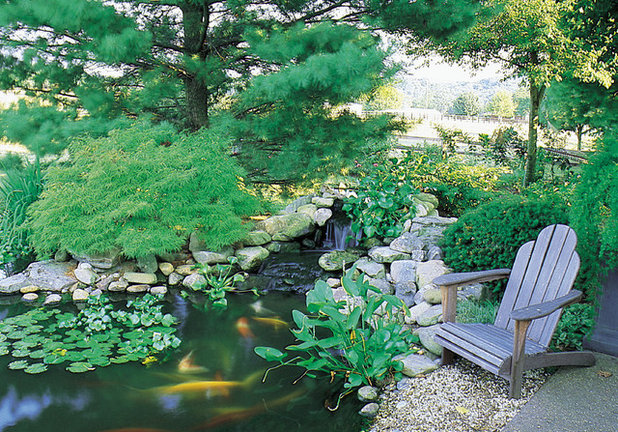
Aquascape
1. DigYou’re going to need a hole. A big one. It's free if you do it yourself. If you need the dirt hauled away, you’ll have to pay. Prices typically range from a couple hundred dollars to several hundred, depending on the amount and other factors.
Leidner prefers deeper holes, but it’s up to you what aesthetic you’re going for. Both shallow and deep ponds have their benefits and disadvantages.
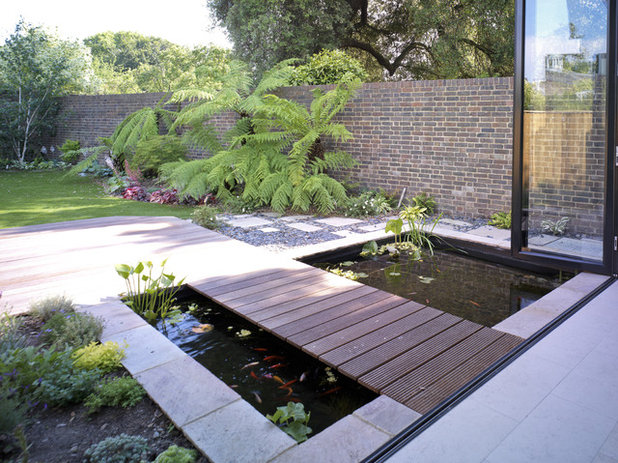
Exedra Architects
Advantages of Shallower PondsLess excavation means less work and fewer materials, so you’ll save money on construction costs and backaches.
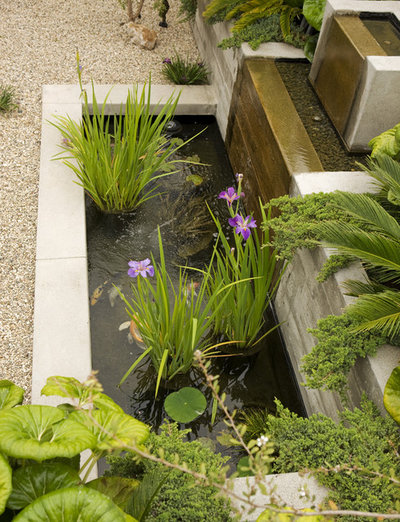
Laidlaw Schultz architects
At 1 foot to 18 inches, a shallow pond will allow you a better view of your fish.
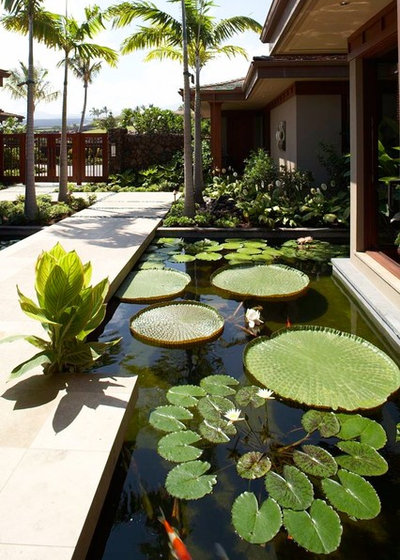
GM Construction, Inc.
Water plants like lily pads will thrive at this depth also. They can't grow in deep water.
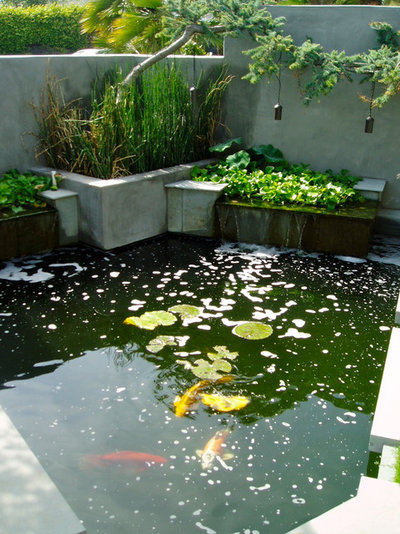
The Design Build Company
Smaller ponds obviously take up less space and can lend themselves to small design flourishes that make a big statement.

Ami Saunders, MLA
Advantages of Deeper PondsFish will grow only in relation to how big the space is that they’re in. In shallow water a koi fish, which can reach 3 feet in length, won’t reach its full potential, as it would in a 5-foot-deep pond.
Fish tend to get sicker in small ponds, because they’re swimming around in water with higher concentrations of their own waste. Deeper ponds mean more water volume and cleaner water. The fish are healthier, making it easier to maintain the right chemical balance.
Deeper ponds make fish harder targets for predators like birds, raccoons and cats, which can easily swipe, swoop and make dinner of fish in shallower ponds. Letting predators make dinner of your fish obviously wouldn’t be cool, especially if you drop $5,000 on one koi fish.
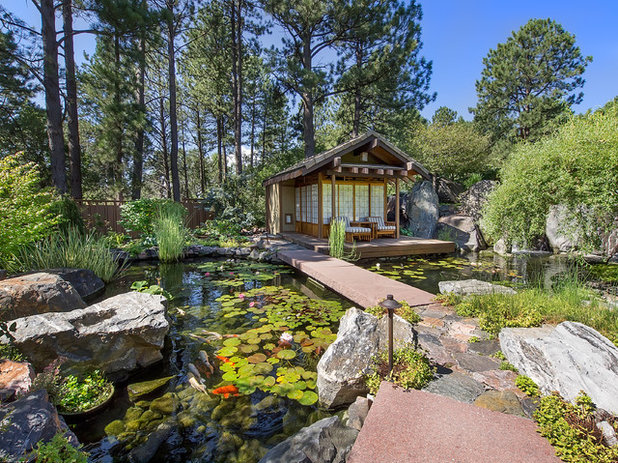
Teri Fotheringham Photography
2. Line the HoleSurprise: Dirt holes don’t retain water very well. You'll have to line your depression. The three most popular methods are concrete spray, rubber liners and plastic tubs.
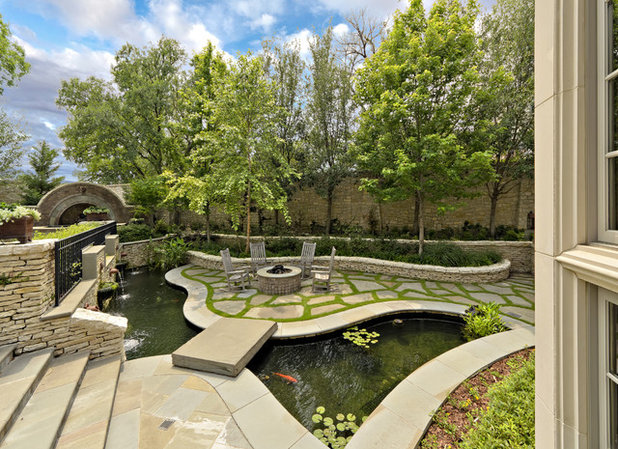
Harold Leidner Landscape Architects
Gunite is a spray concrete commonly used to line swimming pools. Leidner used it for this expansive fish pond in Dallas, built for around $25,000.
Pros: Gunite is long lasting and durable. Creative lighting and other nifty design elements are easy to include.
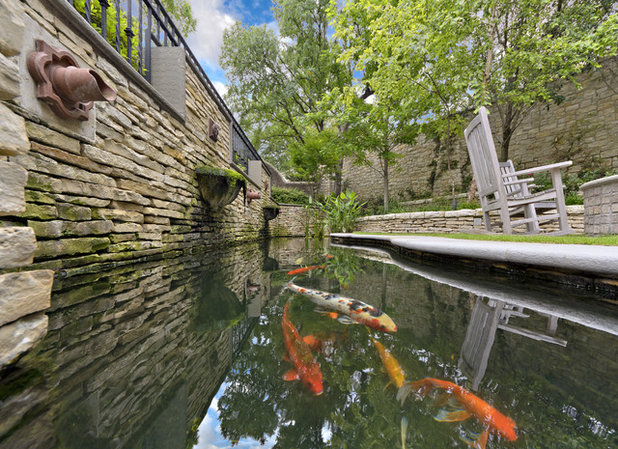
Harold Leidner Landscape Architects
Cons: Cost. You’ll need a professional to install gunite. Leidner says a feasible budget for a professional installation of an average-size pond is $5,000 minimum, which includes pump parts and labor but not fish.
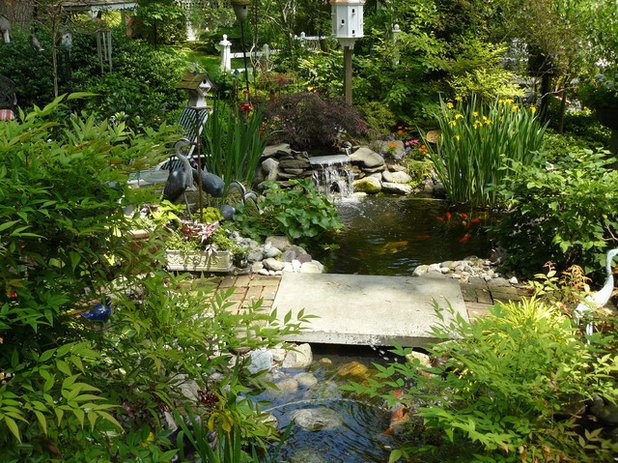
Garrett Churchill Inc.
Rubber liners are also common. Strips are rolled out, sealed together and used to line an excavated hole. Rocks and other design elements are added on top and then filled with water.
Pros: They are common and fairly inexpensive. You can purchase a prepackaged pond kit with rubber liners for $850 to $1,500, depending on the size and other factors.
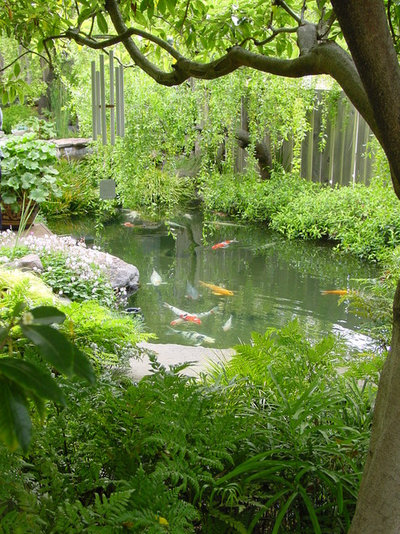
www.KarlGercens.com
Cons: Rubber liners are fairly difficult to install; not all homeowners will understand how to glue and seam the liners together. A small mistake can result in a big drainage problem, and you’ll lose your water and fish. Burrowing rodents also can nibble through the liner. “You’d be surprised how quickly a koi pond will drain into the ground,” Leidner says.
Expert tip: If you do go with a rubber liner, Leidner recommends buying a few bags of concrete, poking holes in them and using the bags to line the hole. Then spray the bags with water and put the rubber liner on top. The bag will dissolve and the concrete will harden, creating a barrier that rodents can’t get through.
Premade plastic tubs are a good alternative. They start at around $800 but come in limited shapes and sizes.
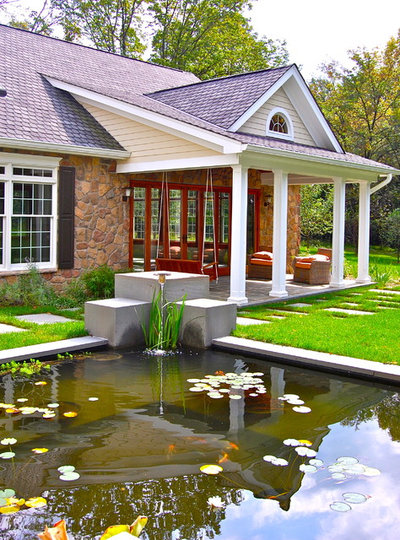
Liquidscapes
3. Install the Pump EquipmentPump equipment can be purchased at most local pool and pond supply companies, with complete installation instructions. You can hide it under rocks or plants, or purchase extensions to conceal it on the side of your house.
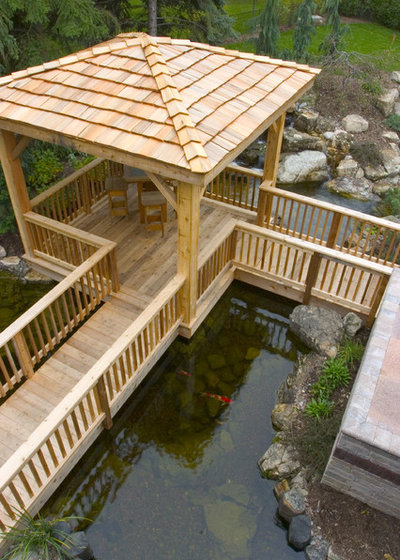
Aquascape
4. Add LandscapingHaving a hole with water won't do anything for your
chi. Make sure you budget for rocks, plants or decking. Once you've got everything looking pretty, add water. You'll want to check the chemical balance and temperature before adding fish.
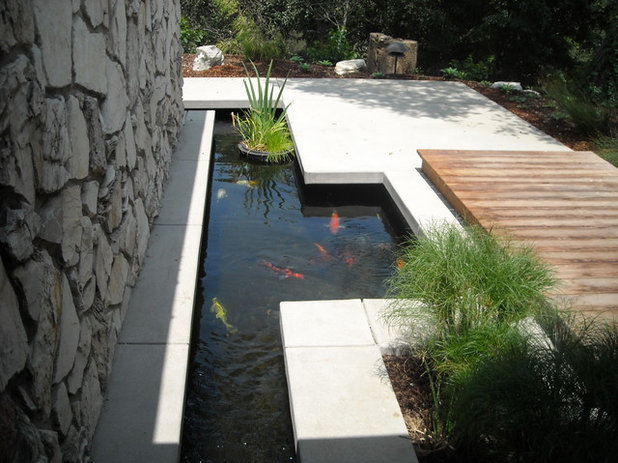
Behr Construction Company
5. Add FishWhile koi are the most popular choice for fish ponds, Leidner recommends fancy goldfish. In addition to having ornate patterns and colors almost identical to those of koi, they're less aggressive and less expensive.
Koi can range from $200 to $7,000 each, while fancy goldfish go for around $35 each.





